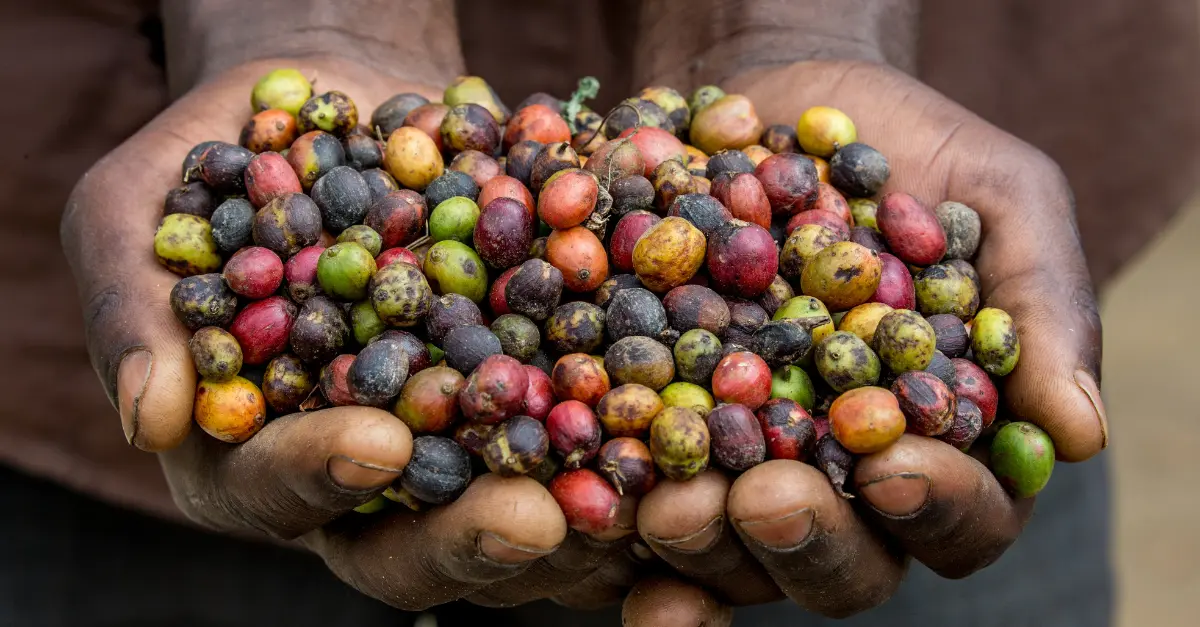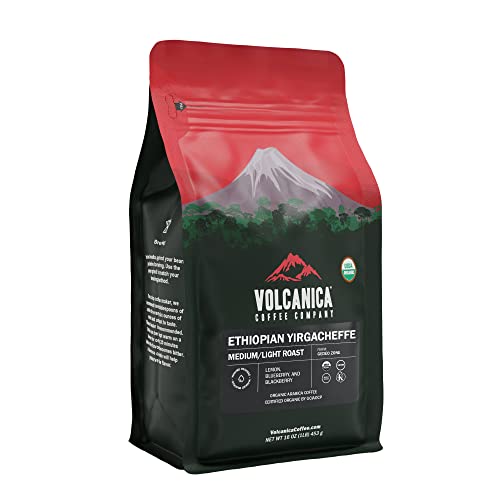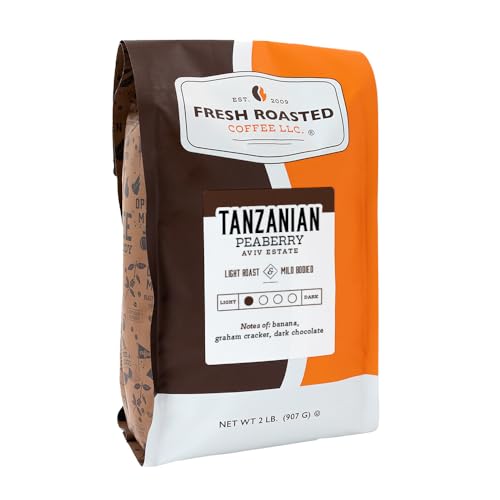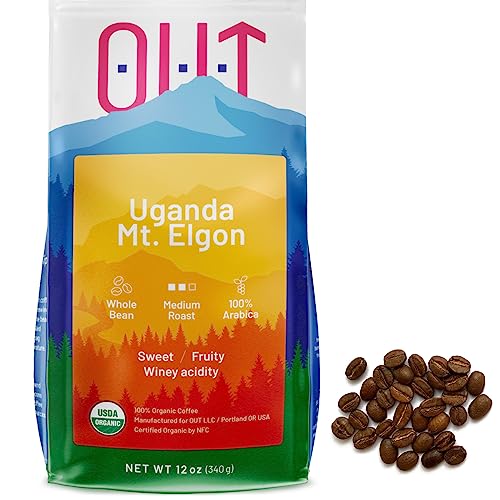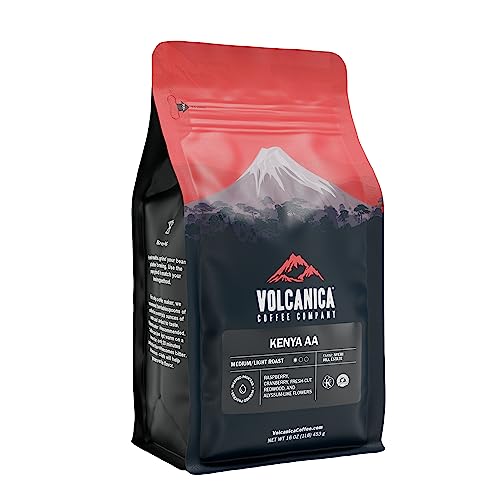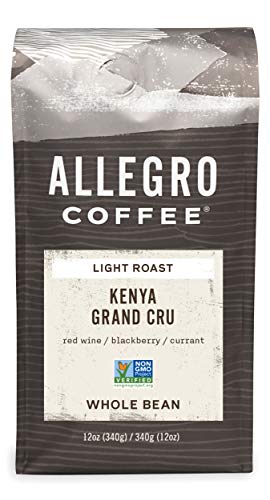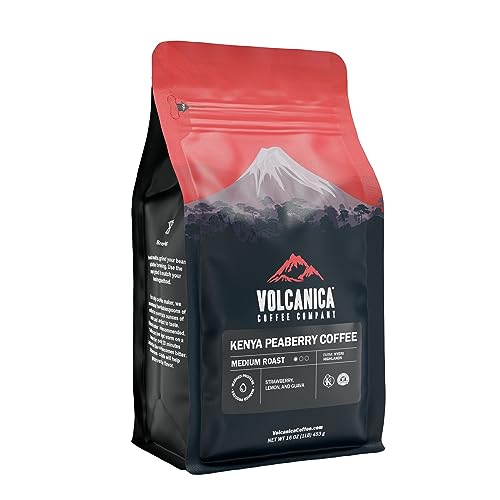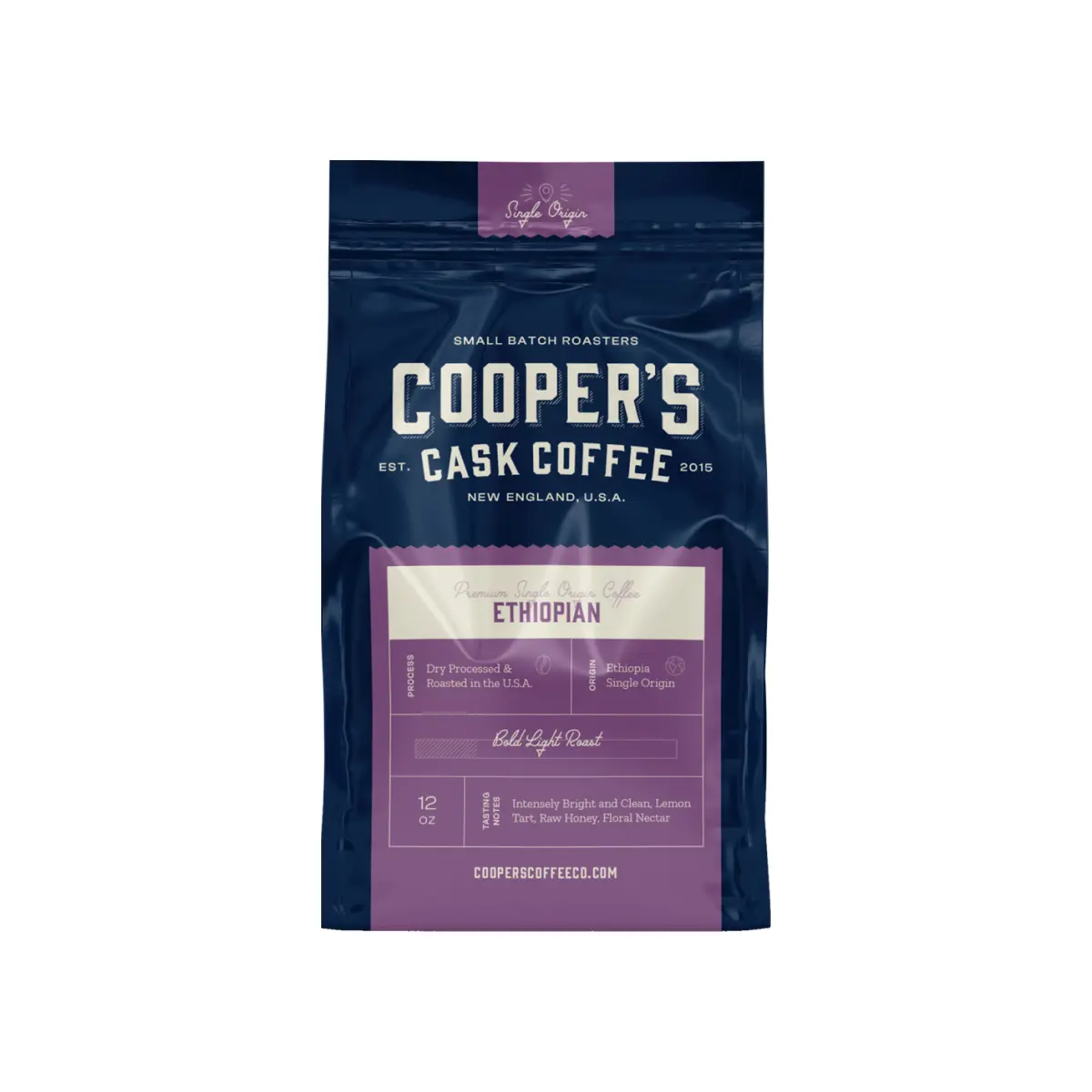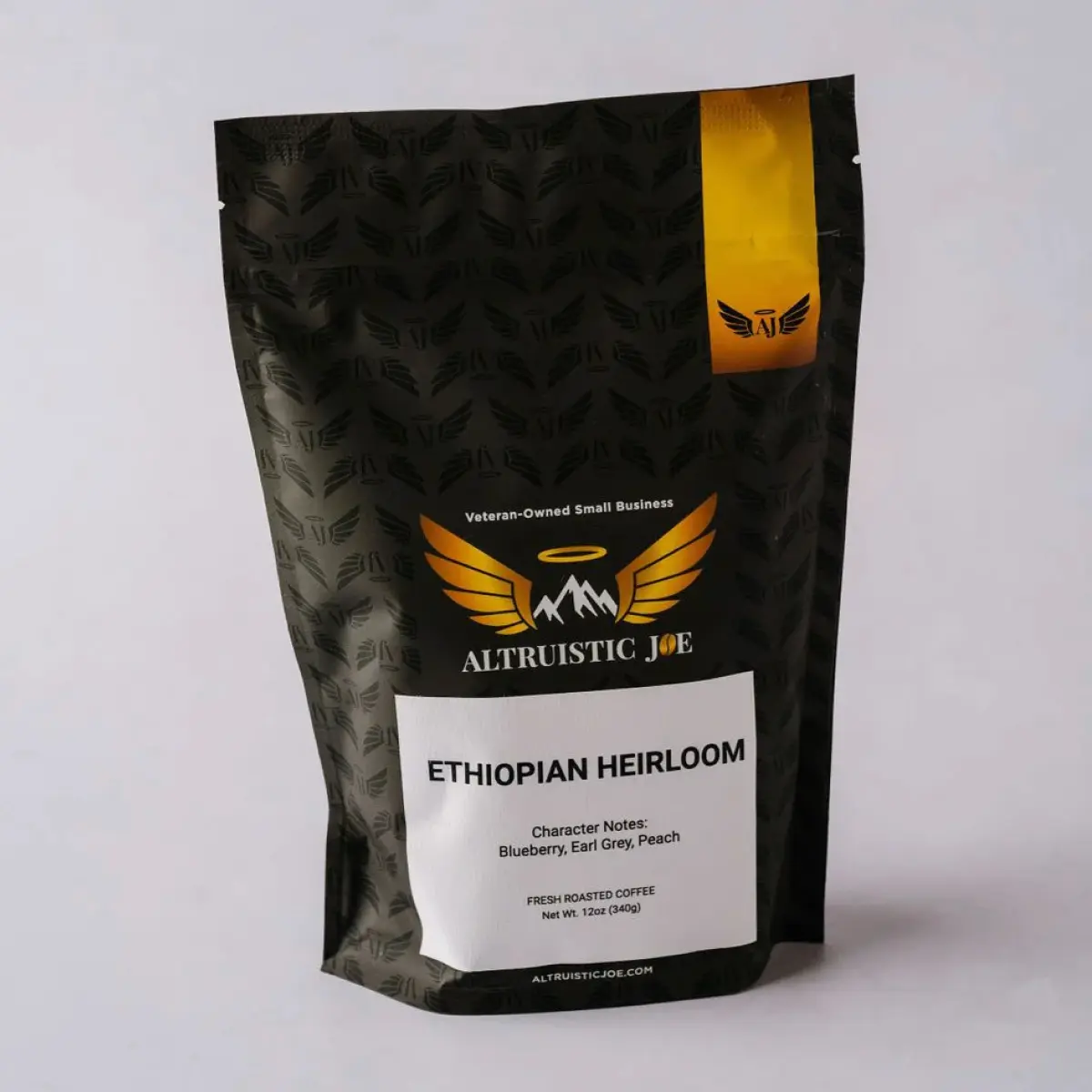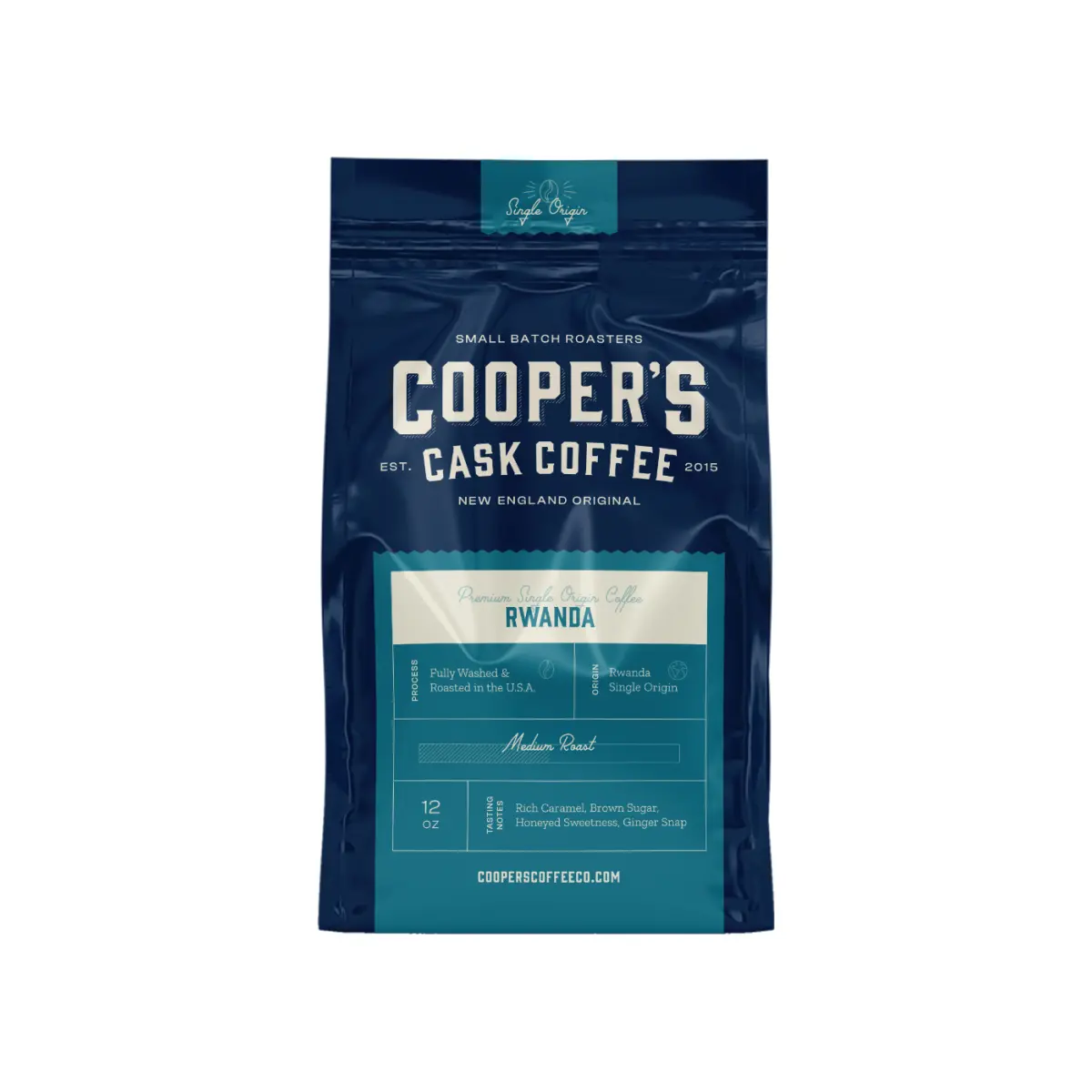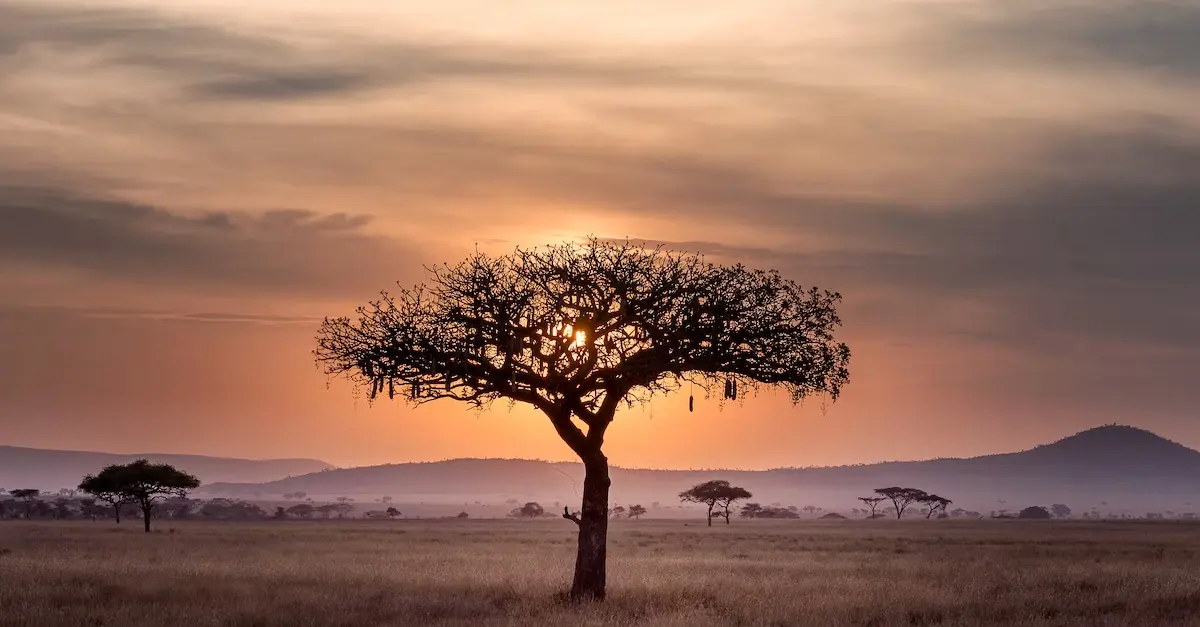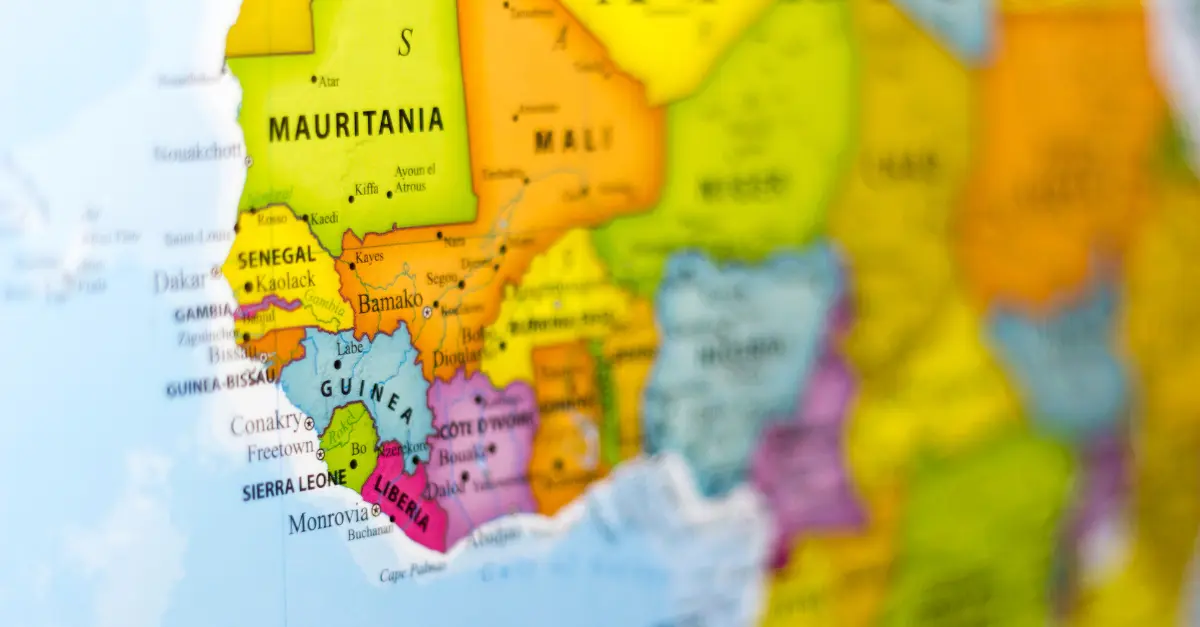East African coffee is ranked among the best coffee in the world. In fact, African coffee is usually associated with coffee from this region of the country. Whether arabica or robusta varieties, it’s safe to say that countries from this region have really perfected the coffee-producing craft.
For many coffee lovers, the question remains: what makes East African coffee different from Latin, Central American, Caribbean, or Asian coffee? What has helped this region perfect this coffee-producing craft?
We’ve assembled answers to these comprehensive questions to help you understand why East African coffee is among the best. We’ve even gone the extra mile to share with you a lineup of our top recommendations of the region’s best coffee on the market so you know exactly what we are talking about.
Try the Best East African Coffee Beans on the Market Today!
You can find many single-origin and blended East African coffee beans online and in-store. But, as a beginner, it can take a lot of work to skim through an endless array of options to make the right choice. We’ve created this easier for you by sharing the top-rated coffee from each East African country to try out as you explore coffee from this region.
| Country | Key Facts |
|---|---|
| Ethiopia | - Birthplace of coffee - World’s fifth-largest coffee producer - Produces 30% of Africa’s coffee - Exclusively grows Arabica beans |
| Uganda | - World’s fifth-largest robusta producer - Produces 70% of Africa’s robusta coffee - One of the top 10 global producers of Robusta |
| East African Coffee | - Best-rated globally - Diverse landscapes and climates - Mostly small-scale peasant farmers - Africa accounts for 12% of global coffee market |
| Tanzania | - Produces 70% Arabica and 30% Robusta - 15th largest coffee producer globally |
| Kenya | - Produces 100% Arabica - 16th largest coffee producer globally |
| Madagascar | - Produces 90% Robusta and 10% Arabica - 23rd largest coffee producer globally |
| Rwanda | - Produces 95% Arabica and 5% Robusta - 28th largest coffee producer globally |
| Burundi | - Produces 100% Arabica - 29th largest coffee producer globally |
Featured Products
Ethiopian Coffee Yirgacheffe Region Beans
⭐ 4.2/5 • 💰 ~$20
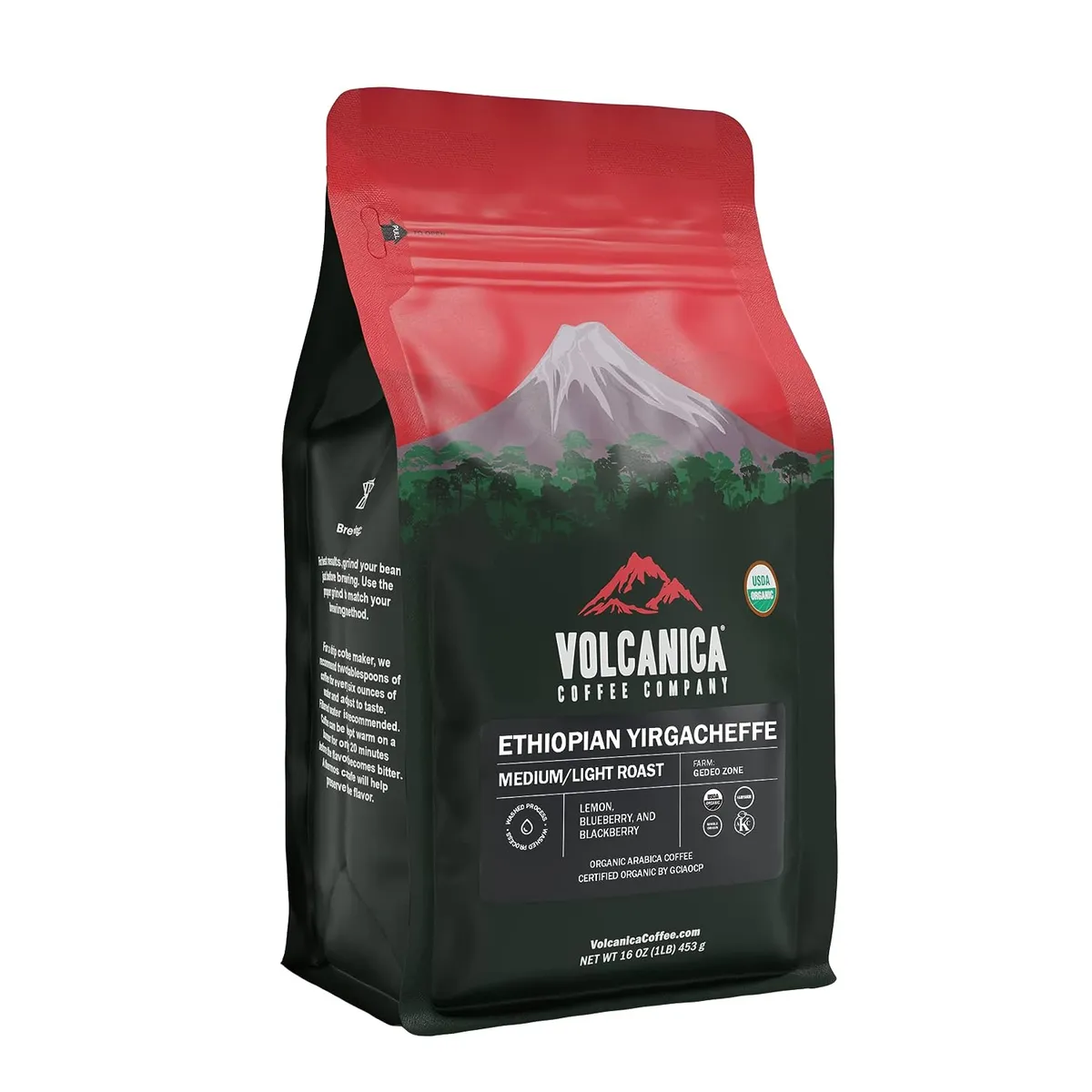
USDA certified organic coffee, freshly roasted from the Yirgacheffe region of Ethiopia. Kosher and high-quality whole beans for a rich experience.
Pros:
- Freshly roasted for superior taste and aroma.
- USDA organic certification ensures top-quality beans.
- Whole bean format allows coffee lovers to grind to preferred consistency.
- Rich, vibrant flavor makes for an outstanding coffee experience.
- Kosher status adds to the appeal for those following dietary laws.
Fresh Roasted Coffee Tanzanian Peaberry
⭐ 4.4/5 • 💰 ~$28
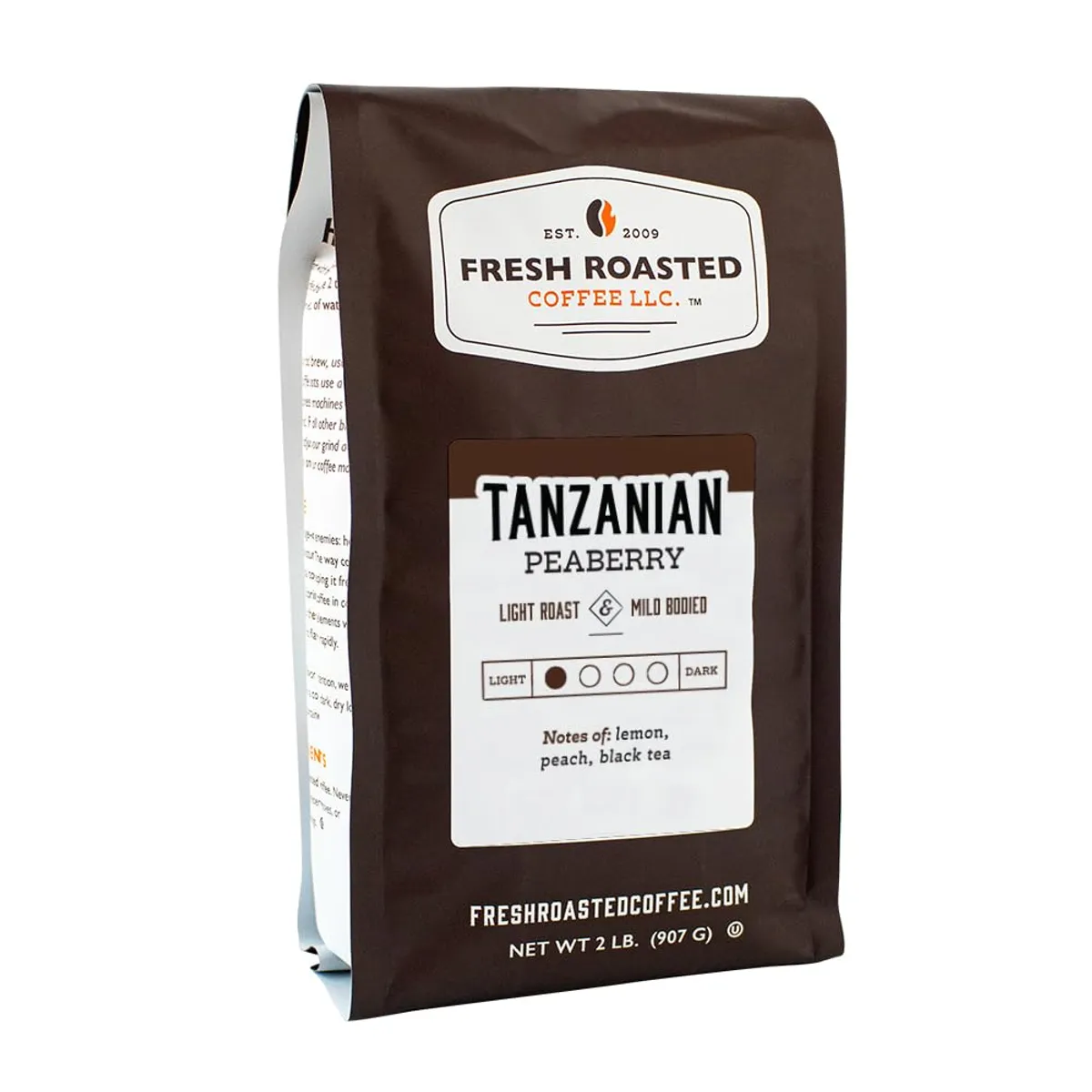
Light roast Tanzanian Peaberry coffee in a 2 lbs whole bean format. Offers a sweet and tart flavor profile.
Pros:
- Unique flavor profile combining sweet and tart aspects.
- Paneled as Kosher.
- Generous 2 lbs bag of whole bean coffee.
- Subtle light roast.
- Suitable for any coffee maker.
Uganda Coffee - Organic Low Acid Whole Bean Coffee
⭐ 4.3/5 • 💰 ~$17
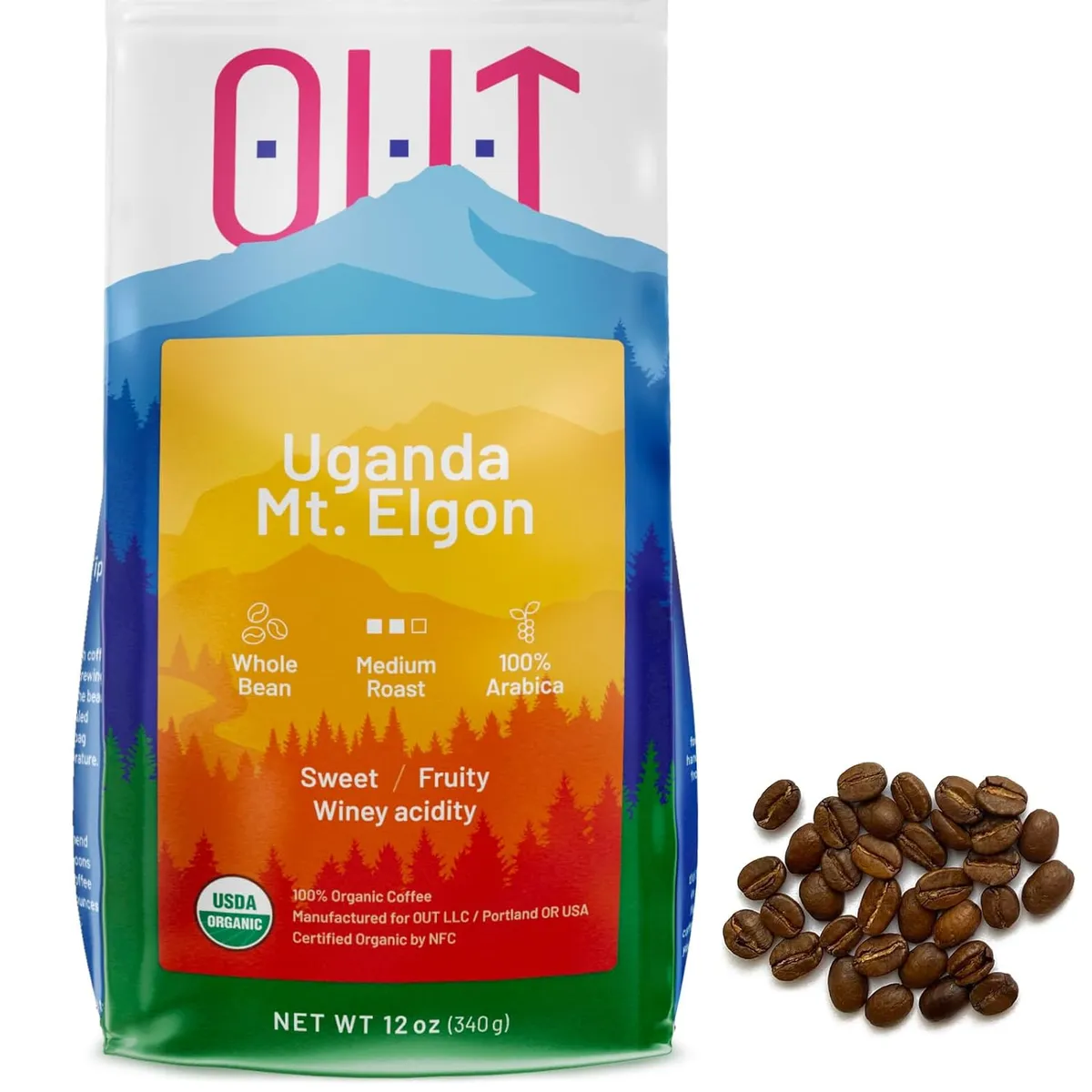
Organic low acid whole bean coffee offering a rich, medium roast, Arabica flavor. Direct trade.
Pros:
- Rich and flavorful aroma
- Comes in whole beans for utmost freshness
- Organically sourced and direct trade
Kenya AA Whole Bean Coffee
⭐ 4.2/5 • 💰 ~$20
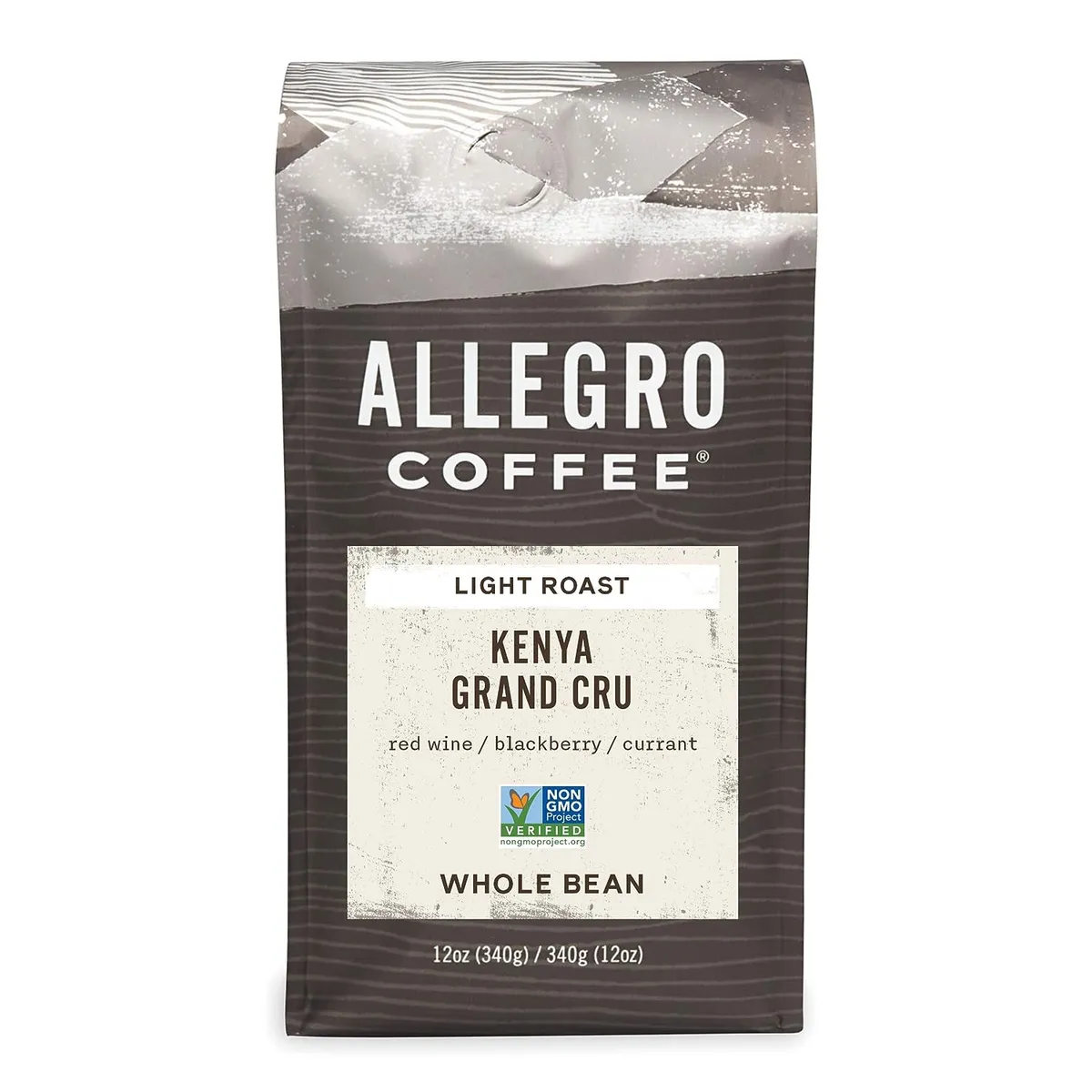
100% pure, freshly roasted Kenya AA coffee, whose whole beans offer a consistently delicious cup.
Pros:
- Rich, satisfying flavor
- Freshly roasted for quality
- Ideal for daily brewing
- Packaged in a handy 16-ounce bag
Allegro Coffee Kenya Grand Cru
⭐ 4.3/5 • 💰 ~$14
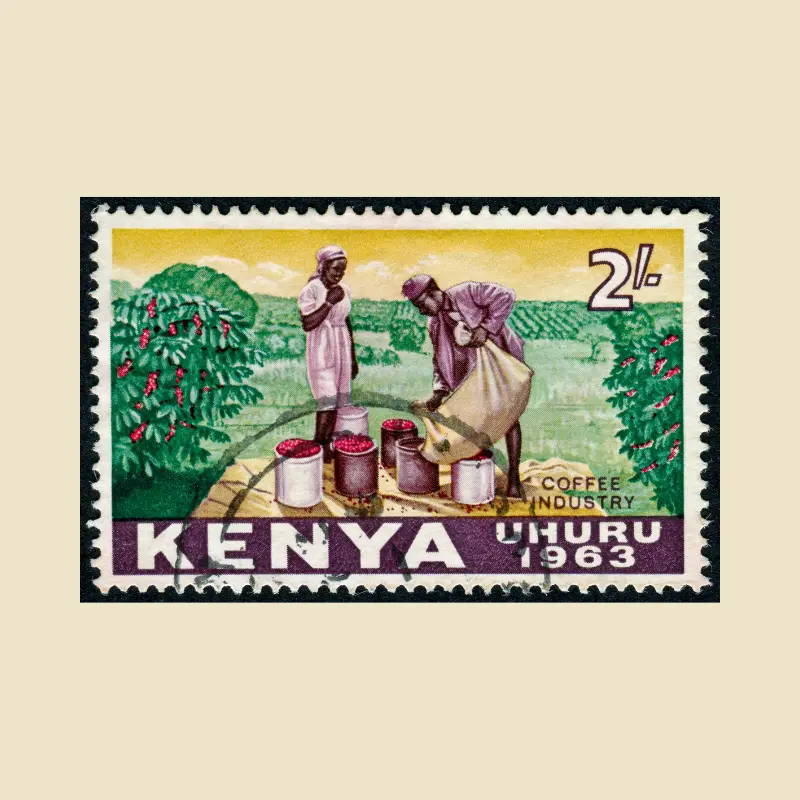
Allegro Coffee’s Kenya Grand Cru is a rich, tasty, and refreshing coffee packed as whole beans in a 12 oz pack.
Pros:
- Delicious and robust flavor
- Packed as whole beans to preserve freshness
- Ideal for any time of the day
Kenya Peaberry Coffee Single Origin
⭐ 4.2/5 • 💰 ~$28
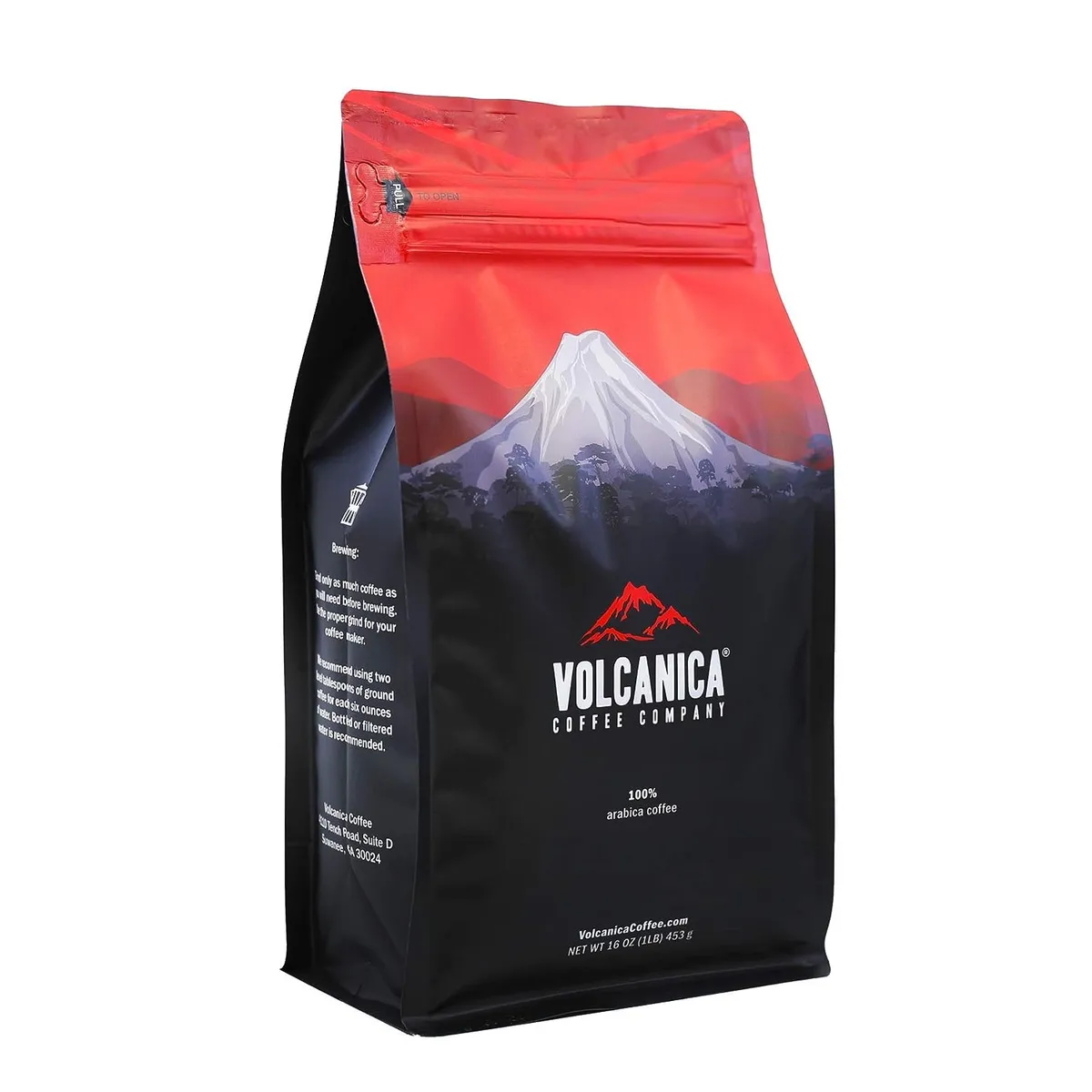
Kenya Single Origin Peaberry Coffee, fresh whole bean, provides a rich, aromatic coffee experience.
Pros:
- Offers a unique coffee experience.
- Whole beans enhance freshness.
- Rich flavor and enticing aroma.
- Entirely sourced from Kenya.
- Packaged in 16-ounce for multiple uses.
Cooper’s Cask Coffee - Ethiopia Light Roast Coffee
⭐ 4.8/5 • 💰 ~$18
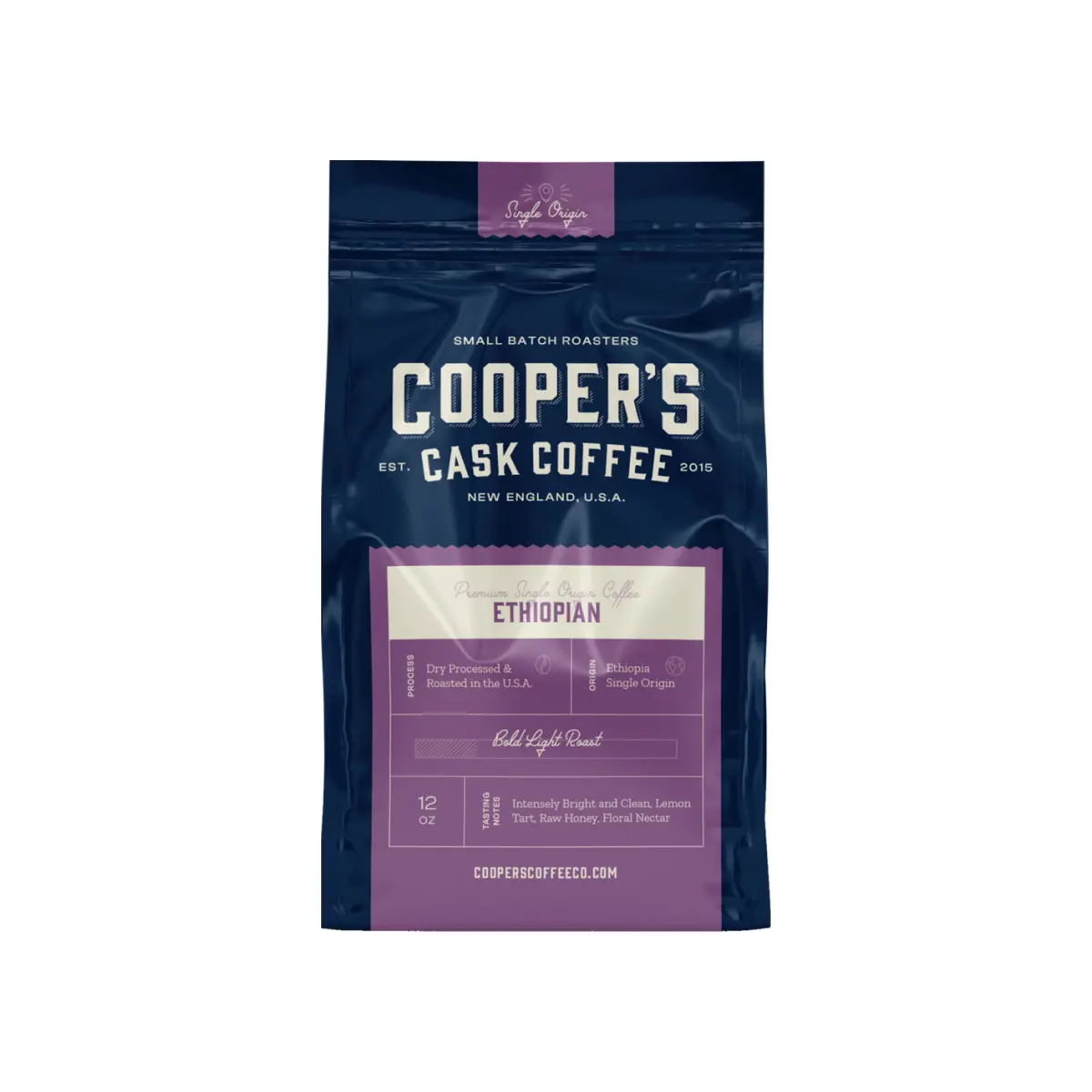
Coopers light roast coffee prides itself on its smooth and clean taste. Their beans are sourced from single-origin farms, ensuring quality and consistency. With a light body and subtle acidity, Coopers provides a refreshing and balanced cup. Smooth and clean taste, single-origin beans, refreshing and balanced flavor.
Key Features:
Roast Type: Light
Process: Dry process
Origin: Ethipia
Tasting Notes: Intensely Bright and Clean, Lemon Tart, Raw Honey, Floral Nectar
Pros:
- Smooth and clean taste
- Lemon, honey and nectar flavors
Ethiopian Heirloom (Light-Medium Roast)
⭐ 4.6/5 • 💰 ~$23
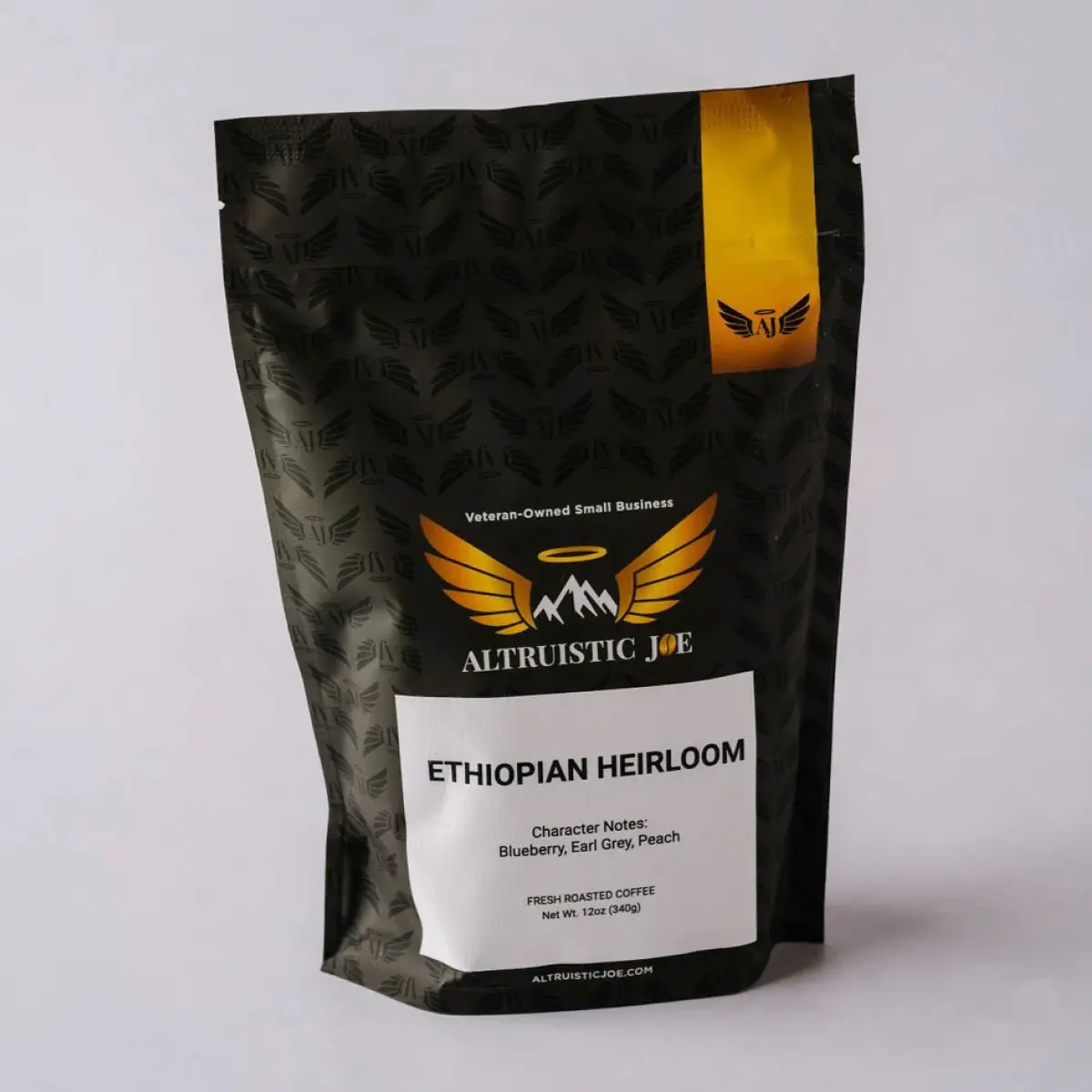
Altruistic Joe is a light roast coffee brand that combines great taste with a commitment to giving back. Their beans are carefully sourced from sustainable and ethically responsible farms, resulting in a smooth and well-balanced cup that supports charitable causes.
Pros:
- Smooth and well-balanced taste
- Sustainable and ethical sourcing
- Support for charitable causes
Rwanda Medium Roast Coffee
⭐ 4.7/5 • 💰 ~$34
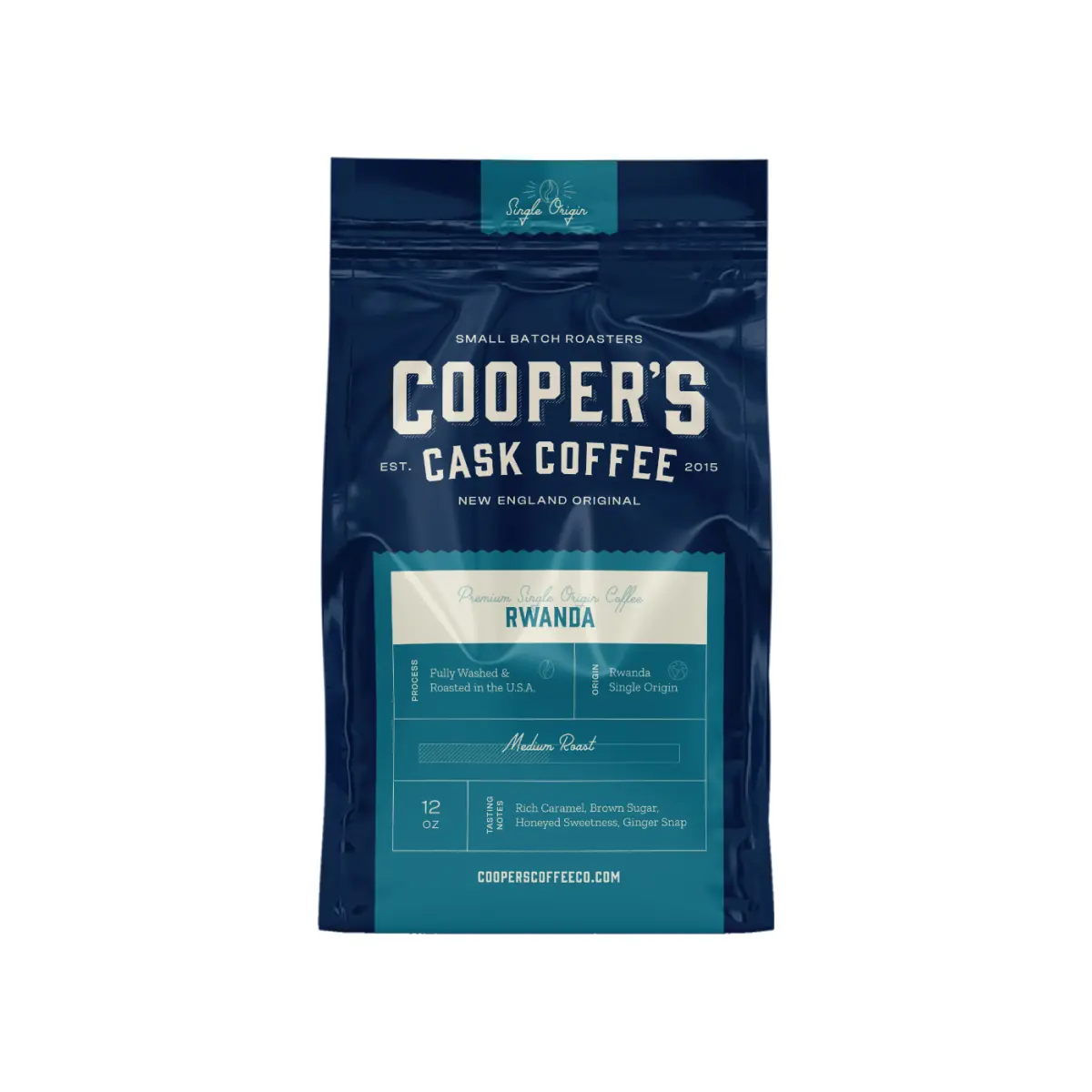
Cooper’s Cask Coffee’s Rwanda coffee offers a delightful start to the day with its sweet taste and silky body.
Pros:
- Sweet Taste
- Silky Body
- Diverse Flavor Profile
- Single Origin
East African Coffee Facts
- Ethiopia is the birthplace of coffee
- East African coffee belt region is made of Ethiopia, Kenya, Uganda, Tanzania, Rwanda, Burundi, and Madagascar
- Ethiopia is the world’s fifth-largest coffee producer – and Africa’s largest producer!
- More than a quarter (about 30%) of coffee from Africa comes from Ethiopia
- Uganda is the world’s fifth-largest producer of robusta coffee – and Africa’s second-largest producer of coffee.
- 70% of robusta coffee in Africa is produced in Uganda
- Uganda, Tanzania, and Cote d’Ivoire are the only top 10 global producers of Robusta coffee from Africa
- Unlike arabica coffee, Coffea canephora AKA robusta, originates in Central, East, and West Africa
- Ugandan robusta has a milder and more aromatic taste with higher acidity than other robusta
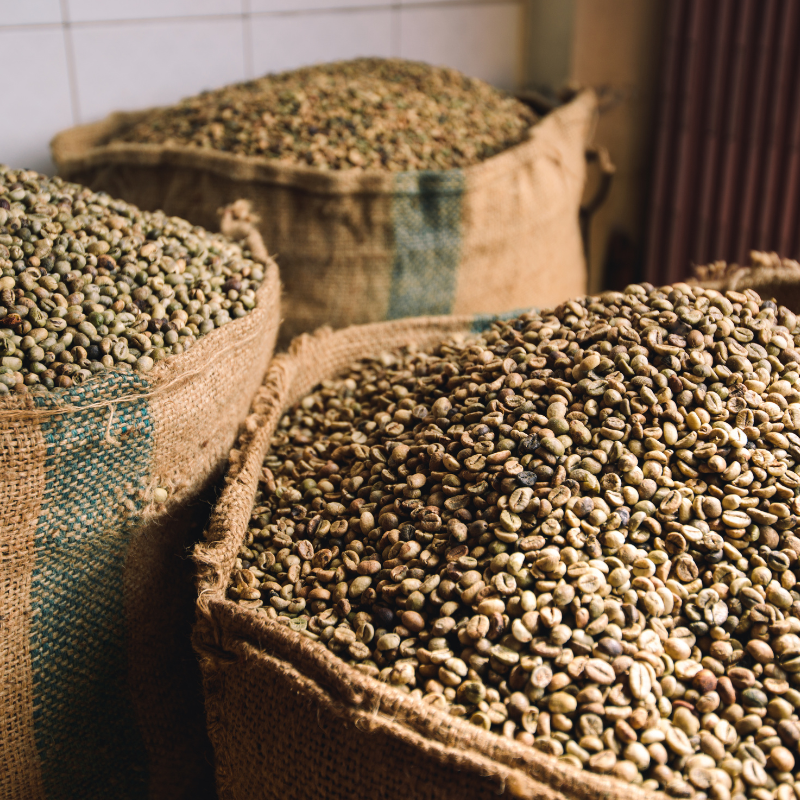
East African Coffee: An Overview
East African coffee is among the best-rated globally for its delicious, delicate flavors and decadent aromas. This vast region is blessed with a mix of varying landscapes and climates. Like its culture and people, the East African landscape is versatile, creating the perfect environment for its diverse coffee.
The region also enjoys some of the world’s best geographical landscapes and climates for arabica and robusta coffee farming. While some regions provide the perfect conditions to harness the delicate arabica coffee beans, others offer subtle conditions for robusta coffee beans. Nonetheless, the one thing shared across the 7 East African coffee-growing countries is the type of coffee farms.
Even with its impressive accolades, Africa only accounts for 12% of the global coffee market – less than a quarter of the market share! Of this 12% piece of pie, Ethiopia dominates nearly half of the share - leading at 39% with only Arabica coffee beans.
Uganda follows the trail, accounting for 23% of the African market share. Tanzania and Kenya at 6% and 5%, respectively, follow through. So, East African coffee makes up more than two-thirds of the total African coffee market. The rare peaberry coffee beans, which make up about 10% of the total world coffee production, are also grown in East Africa.
Most coffee producers in this region are small-scale peasant farmers with smaller farmlands, typically at most half a hectare. This explains why coffee cooperatives are very popular in the area. Additionally, these coffee cooperatives serve as washing stations and wet mills for farmers to process their beans. The region also hosts a small percentage of larger coffee estates and plantations.
Compared to slightly more developed regions, East African coffee producers typically employ natural means in coffee production, staying in touch with nature. Since coffee is grown by small peasant farmers, it is not grown plantation-style, with maximum profit in mind. Instead, farmers grow the coffee in a companion planting manner.
Now, this style of growing is beneficial. The farmer must pair the coffee trees with other cash and food crops. Companion planting benefits the plants as well. For instance, farmers in regions in Tanzania, Uganda, Rwanda, and Burundi tend to grow coffee alongside the staple banana trees.
Banana trees come with a soil nitrogen fixing advantage – helping to yield sufficient nutrients for the nutrient-loving coffee trees. These minor differences don’t just aid in sustenance but significantly improve the quality of the coffee beans.
When it comes to picking, strip picking (coffee stripped off the branches) and selective hand picking (only ripe red cherries are handpicked one at a time) are the most commonly used practices.
East African arabica coffee farmers, in particular, prefer the latter practice. While this practice can be labor-intensive and time-consuming, it helps to keep wastage low and ensures the best quality coffee is picked. Since equal attention is given to every cherry, there’s less chance of damaged or defective cherries ending up in the lot.
While East African coffee stands out, its unimpressive low global market share isn’t random. Instead, a long list of regional issues significantly contributes to this limited market reach. Some of these problems include poor education, limited to near non-existent infrastructure and transportation means, and lack of government support, among others.
East African Coffee Producing Countries
East African coffee belt countries produce arabica, robusta, and Liberia beans. However, you will also find countries focusing on a single bean variety. For instance, Ethiopia exclusively has Arabica beans, while Uganda focuses on Robusta beans.
Coffee production in East Africa happens in 7 countries. These include;
- Ethiopia
- Uganda
- Tanzania
- Kenya
- Madagascar
- Rwanda
- Burundi
Here are the Coffee Producing Countries in East Africa;
1. Ethiopian Coffee
Country: Ethiopia
Growing regions: Yirgacheffe, Sidamo, Harrar, Bebeka, Teppi, Limu, Jimma, Illubabor, Lekempti, Wellega, and Gimbi,
Growing Altitude: 1500-2200m/4,922-7,218ft
Coffee varieties: 100**%** Arabica
Processing: Dry and wet
Profiles: Intense to well balanced with complex acidity and berry, citrus, chocolate, fruity, floral, spice, and wine-like (arabica) Chocolate, spice, and citrus (Mocha Harrar)
Average production: 846 million pounds (4.4%of the total global coffee production)
Harvest season: October to April
Overall global rank: 5th
While the Arabica coffee variety has spread across all coffee-producing continents, Ethiopia is believed to be the birthplace of coffee – Arabica coffee in particular. Coffee in Ethiopia can be traced as early as the 17th century when the plant grew.
After its discovery, the plant spread towards the north, reaching Yemen, further popularizing it. While Arabica coffee beans are native to Ethiopia, Yemen is their historical domestication center.
Arabica is associated with Arabic coffee, as merchants referred to this beverage from Yemen. Yemen was the domestication center due to its large port – serving as a link between inland areas, as far as Ethiopia, with the East.
Interesting fact: Indonesia’s prized Mocha Java coffee resulted from crossing coffee beans from Yemen Mocha beans and Indonesian Java.
Ethiopia accounts for about 4% of the global coffee market today. Nonetheless, this is not to say that the country’s coffee isn’t anything but impressive. Coffee is deeply entrenched in Ethiopian coffee and the country is among the few in East Africa with a strong coffee culture.
Half of the coffee produced is consumed within the country. Further, coffee also plays a significant part in the country’s export revenue – accounting for nearly 60% of the foreign income.
As mentioned, Ethiopia exclusively grows Coffeea arabica or the Arabica coffee variety. The variety in Ethiopia is divided between longberry, shortberry, and mocha. As the name suggests, long-berry beans are the largest, with higher flavor quality and value.
Shortberry varieties tend to be smaller than longberry, but they are still of higher value than beans originating from eastern Ethiopia. The Mocha variety primarily grows as the Mocha Harrar. The Mocha Harrar is a type of peaberry that grows in Ethiopia, prized for its distinctive flavors and aroma.
Ethiopian coffee grows along mountainside farms or fincas at extremely high altitudes, ranging between 4,922 and 7,218 feet above sea level. Ethiopian coffee grows in nine key regions, Yirgacheffe, Sidamo, Harrar, Bebeka, Teppi, Limu, Jimma, Illubabor, Lekempti, Wellega, and Gimbi, and is typically marketed under these regional titles. The regional names Yirgacheffe, Sidamo, and Harrar are trademarked and owned by Ethiopia. Think of them as parmesan cheese from Italy or Champagne from France! They are used to label single-origin coffee coming from these regions.
Harrar
In the eastern highlands, the Harar province is in the opposite part of the country. This process produces some of the oldest coffee beans and is believed to be among the origins of Arabica coffee beans. Coffee from Harrar tends to have a fruity, berry, and wine-like flavor profile. Moreover, the beans boast a medium acidity with a full creamy body.
Harrar also produces the unique Mocha Harrar coffee that develops a flavorful profile of chocolate, spice, and citrus notes. Most of the coffee from this region develops a unique taste due to its dry processing. This region also features an interesting coffee practice that uses the cheaper by-products of coffee. Coffee bean shells are used to produce tea called hasher qahwa.
Sidamo
Sidamo province is located in southern Ethiopia and covers the southern Peoples Region and Oromia region. Sidamo or Sidama coffee grows between 4,920 and 7,217 feet above sea level. So, most of it qualifies as Strictly High Grown (SHG) coffee. Due to the high altitude and favorable environment, coffee from this region is extremely slow to grow, giving it time to develop its nuanced flavors and sugars.
Moreover, the environment offers enormously enriched soil with the perfect climate. As a result, you get robust flavors and some of the best quality coffee in the world. Coffee from this highland region offers a well-balanced profile with distinctive berry, lemon, and citrus notes with complex and crisp acidity, a rich mouth feel and body, and a bright finish. While it offers a better price-to-quality ratio, Sidamo coffee is typically cheaper than Yirgacheffe coffee.
Yirgacheffe
Yirgacheffe and Guji coffee are part of the larger Sidamo region coffees. But, their higher quality and trademarked name usually separate them as their own category. This highly sought-after coffee features a fragrant and spicy coffee profile with a delicate body and sweet floral and citrus notes.
Guji
Guji coffee grows in the Oromia region and is a popular beverage among its people. These beans boast a medium profile with sweet flavors, fruity aromas, and medium acidity. While beans from different farms may vary, Guji coffee is characterized by dark chocolate, peach, and nectarine flavor notes.
Limu
Limu is part of the larger Oromia in the southwestern Kaffa region. Coffee from this region is of high quality, medium-sized, and usually boasts a mic of fruity and citrus taste profile with tart acidity.
Genika
Genika coffee is single-origin coffee beans that trace their roots to the South West Ethiopia People’s Region. This region is also known as Bench Sheko (formerly Bench Maji). Beans from the region tend to be smaller and grayish. Yet, they maintain the characteristic high Ethiopian coffee qualities. Genika coffee has an intense profile with spice, wine, chocolate, and floral notes.
Jimma
Jimma coffee is grown in the Illubabor and Kaffa regions. These regions are also believed to be amongst the first to cultivate coffee. Jimma coffee is grown from 4,400 feet elevation and produces a low-acid coffee.
Coffee from this region is usually fruity with fruity and tea-like notes. Coffee processing is believed to be significant in the coffee’s flavor. While the washed process produces this coffee/s beautiful flavors, it is believed that dry processing yields an earthy and medicinal flavor.
Coffee from regions like Yirgacheffe and Sidamo are amongst the highest rated in the world. Yet, Ethiopian coffee remains affordable than other high rated coffee, like the Hawaiian Kona and Jamaican Blue Mountain.
For example, Ethiopia’s Guji, Yirgacheffe, Sidamo, and Harar coffee account for a huge portion of Starbucks coffee revenue. Unfortunately, Starbucks has always received criticism for the profit it makes while Ethiopian peasant farms still receive a virtually non-existent profit margin.
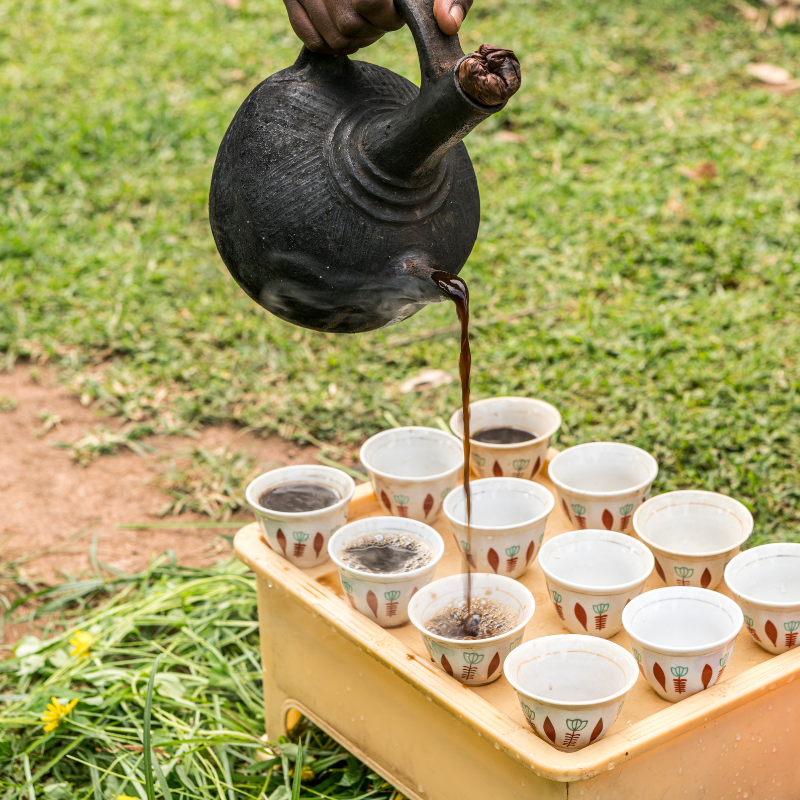
2. Ugandan Coffee
Country: Uganda
Growing regions: West Nile, Northern Region, Eastern, Central & Southwest (including the Lake Victoria Basin), and Western(majority are arabica beans)
Growing Altitude: 1,300 – 2,200m/4,265-7,218ft
Coffee varieties: 80**%** Robusta and 20% Arabica
Processing: Wet (washed) and natural (dry)
Profiles: high bitterness and slightly higher than average acidity (Robusta) orange and tea notes (arabica) sweet chocolate notes(Bugisu Arabica)
Average production: 635 million pounds (2.4% of the total global coffee production)
Harvest season: October to February (arabica coffee) November to February (Robusta coffee)
Overall global rank: 8th
While Ethiopia is the East African haven for arabica coffee beans, Uganda takes the baton for robusta coffee beans. This country is Africa’s largest producer of robusta. Moreover, robusta coffee in Uganda grows as an indigenous coffee, extending to the wild around Lake Victoria.
But, regarding coffee, Uganda has faced its highs and lows. The 1970s to 1980s could have been better as the country was riddled with conflict and security problems. While Uganda would sometimes exceed its production threshold, most of the coffee was simply smuggled out of the country to be sold elsewhere.
However, from the 90s to date, the Ugandan coffee industry has stabilized and continues to thrive. But, the 2000s also came with its fair share of troubles. These include plummeting coffee prices and the widespread coffee wilt disease that kills coffee trees. Nonetheless, the coffee industry in Uganda is still relatively good.
Uganda primarily produces robusta coffee beans. However, the country also grows a very small amount of arabica coffee beans introduced from Ethiopia along the Mount Elgon slopes. Arabica coffee varietals grown in Uganda include Typica, SL, and Kent. An exceptional Bugisu varietal also grows in the Bugisu region near Mount Elgon.
Coffee grows in the southeastern part of Uganda – with arabica coffee cultivation extending to the southwestern part. Robusta grows in the Lake Victoria basin and is known for its high bitterness and low acidity.
It’s worth noting that Ugandan robusta beans are grown at higher altitudes than those from other African countries. Paired with the rich clay soils of the Lake Victoria basin, these beans develop a higher acidity, allowing for a good cup of coffee.
While you can find a good variety of Ugandan robusta coffee for retail, it is typically used as an ingredient for other coffee-based products. These include crafting espresso blends – Ugandan robusta produces incredible crema and adds to the boldness of espresso. Robusta coffee from Uganda is also used to make coffee mixes.
While robusta coffee is primarily cultivated as a cash crop, arabica beans are grown among other food crops, like bananas and beans for consumption. Arabica coffee beans grown in Uganda develop a woody and fruity aroma with taste notes of orange and tea. The coffee also features a smooth body and wine-like acidity.
Ugandan arabica from the Bugisu region develops the characteristic East African wine-like cupping notes. It even features a rich texture and sweet chocolate notes. But, its relatively lighter body makes it far less superior than the finer Tanzania, and Kenyan arabica coffee.
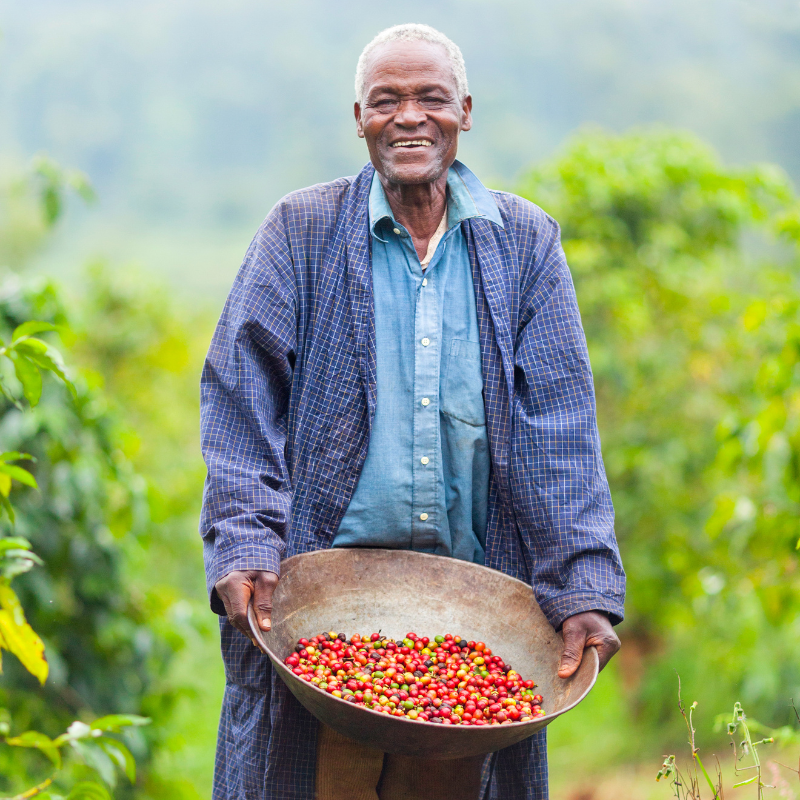
3. Tanzanian Coffee
Country: Tanzania
Growing regions: Mbeya, Kilimanjaro, Arusha, Morogoro, Tanga, Iringa, and Kagera (Robusta)
Growing Altitude: 1,400-1,800m/4,593-5,906ft
Coffee varieties: 70**%** Arabica and 30% Robusta
Profile: Earthy and bitter (robusta) Bright and sweet fruity and floral (arabica)
Processing: Natural and washed
Average production: 106 million pounds (0.6% of the total global coffee production)
Harvest Period: July – August (Northern regions) April – May (southern Regions)
Overall global rank: 15thh
Tanzanian coffee also stands among the best-rated coffee from Africa. Coffee is among the largest export crops in the country, with 70% of the harvesting arabica while the remaining 30% is robusta. Coffee in Tanzania is grown in 6 regions in the country’s north, northwestern, and southwestern parts. These include the regions of Kilimanjaro, Mbeya, Kagera, Morogoro, Tanga, and Iringa.
However, most of the coffee comes from Kilimanjaro, Mbeya, and Kagera regions. Most, if not all, robusta coffee beans from Tanzania are cultivated in the Kagera region. The Kilimanjaro, Arusha, and Kagera regions are in the northwest and northeast parts of the country, respectively, while the remaining regions form part of the southern highlands.
Most coffee farmers in Tanzania are small-scale peasants, explaining why cooperatives are still popular in Tanzania. Tanzania regulations of coffee dictate that all coffee meant for exports is to be sold to cooperatives and then auctioned by the coffee board. Tanzanian arabica coffee beans boast a rich and intense taste with a medium to full body.
Moreover, beans grown in Tanzania usually boast sweet fruity, or berry-like notes. Nonetheless, you can also get woody and cedar-like hints. However, Tanzania coffee has a more nuanced acidity and milder body than Kenya coffee. But, you still get the intense fruity flavors from the coffee.
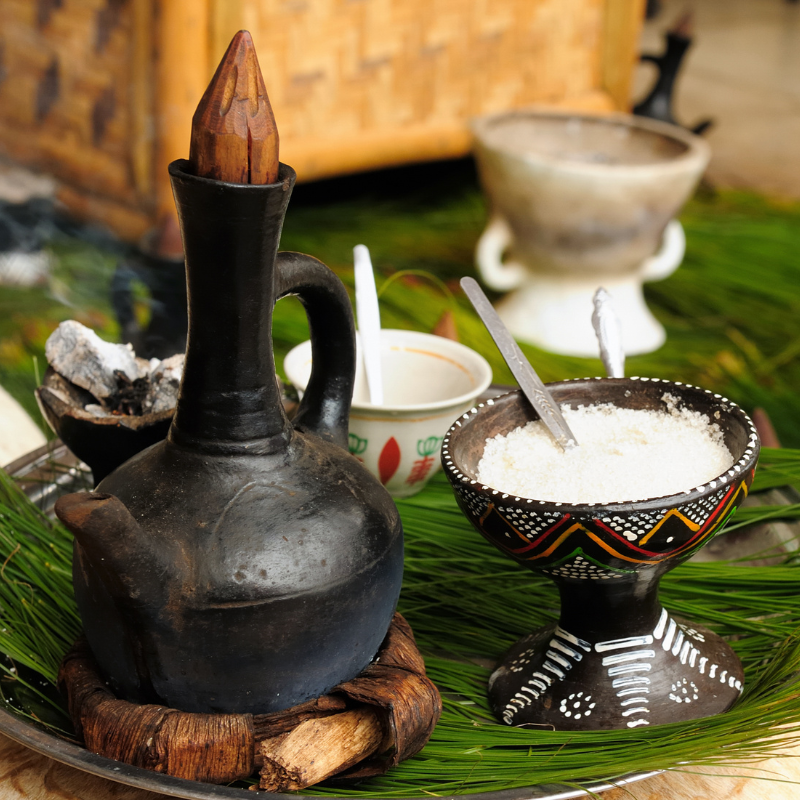
4. Kenyan Coffee
Country: Kenya
Growing regions: West, Northwest, Littoral, Southwest, South, Center, and East
Growing Altitude: 1,700-1,800m/ 5,578-5,906ft
Coffee varieties: 100% Arabica
Processing: Natural, washed, and raised beds
Profiles: Fruity, berry-like, and floral
Average production: 110 million pounds (0.5% of the total global coffee production)
Harvest season: October –December or June - August and February – August (New crop coffee)
Overall global rank: 16th
Like Ethiopia, Kenya primarily grows arabica coffee while more than 70% of the coffee is grown by small-scale farmers. Coffee in Kenya is grown in highland regions on the west side of Mount Kenya along with Ruiru, Thika, Kirinyaga, Nyeri, Kiambu, and Muranga.
Like Tanzania, each region has a unique geographical profile, making it very easy to differentiate single-origin coffee from different regions. Kenyan coffee develops an intensely rich profile with deep wine-like acidity and an intoxicating aroma. Notes of fruit and berry primarily characterize the flavors. Large coffee chains, like Starbucks, carry a variety of coffee originating from Kenya.
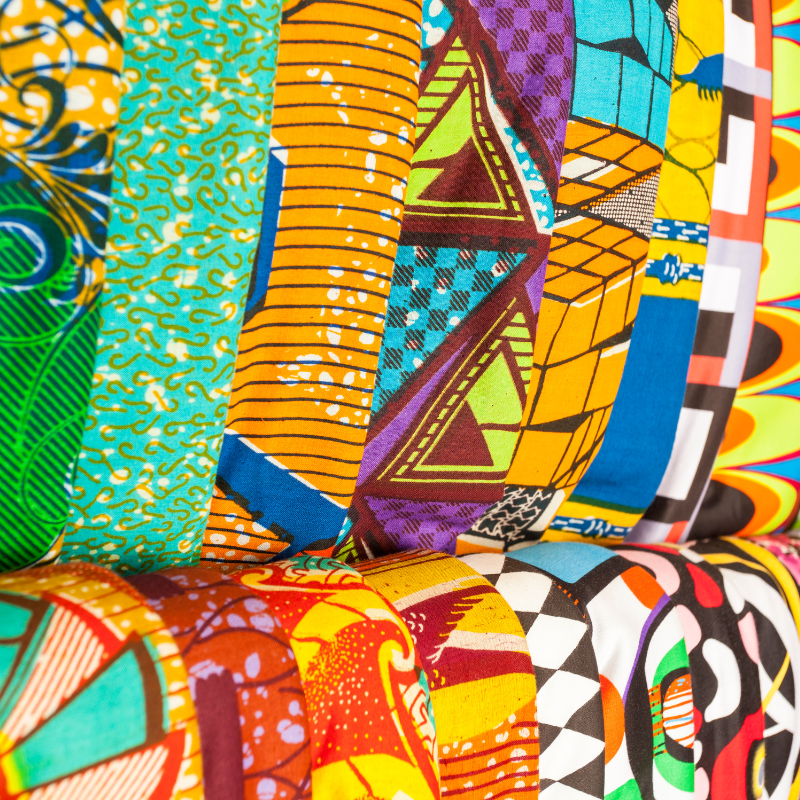
5. Malagasy Coffee
Country: Madagascar
Growing regions: Vatovavy, Fitovivany, Antalaha, Tamatave, near Ambanja, by the Sambirano River, and Antananarivo (arabica)
Growing Altitude: 100-300m/328-984 ft
Coffee varieties: 90**%** Robusta and 10% Arabica
Profile: Full-bodied and intensely flavored (robusta) floral, fruity, and spice (arabica)
Processing: Natural
Average production: 66 million pounds (0.3% of the total global coffee production)
Harvesting Period: June – July
Overall global rank: 23rdh
Madagascar is not exactly in East Africa. But, when categorizing coffee from Africa, it easily falls under this geographical region. Located on the southeast coast of Africa, this fourth-largest island is the 23rd-largest coffee producer. French colonizers introduced Coffee on this island in mid to late 19th century from the neighboring Reunion Island.
Fun fact: La Reunion is located off the coast of continental Africa, near the countries of Madagascar and Comoros. However, the country voted to remain French in a referendum after abolishing colonization. To date, La Reunion is still an overseas French territory.
Malagasy coffee production is unique compared to other East African countries because most of the coffee produced is consumed domestically. 90% of the coffee made in the country is robusta with the remaining 10% being arabica.
Malagasy coffee has a complex history, with highs and lows. In the 1960s to 1980s, Madagascar was the 8th largest coffee producer in the world. Unfortunately, the high coffee production has significantly dropped. Today, the Malagasy coffee industry struggles due to the lack of investment and public sector involvement, old farming practices, knowledge of modern practices, and poor infrastructure.
Due to the lack of modern farming equipment and fertilizers, Malagasy coffee is still organically grown with companion planting, intercropping, and natural fertilizer application practices. Interestingly, Madagascar has done incredibly well with other food crops, such as vanilla and clove, on the world market.
Coffee in Madagascar is grown at relatively low altitudes in the east coast regions of Vatovavy, Fitovivany, Antalaha, and Tamatave. You will also find coffee growing in the northwest, near Ambanja and by the Sambirano River. On the other hand, arabica coffee beans are grown in the central highlands near the capital region of Antananarivo and Lake Alaotra.
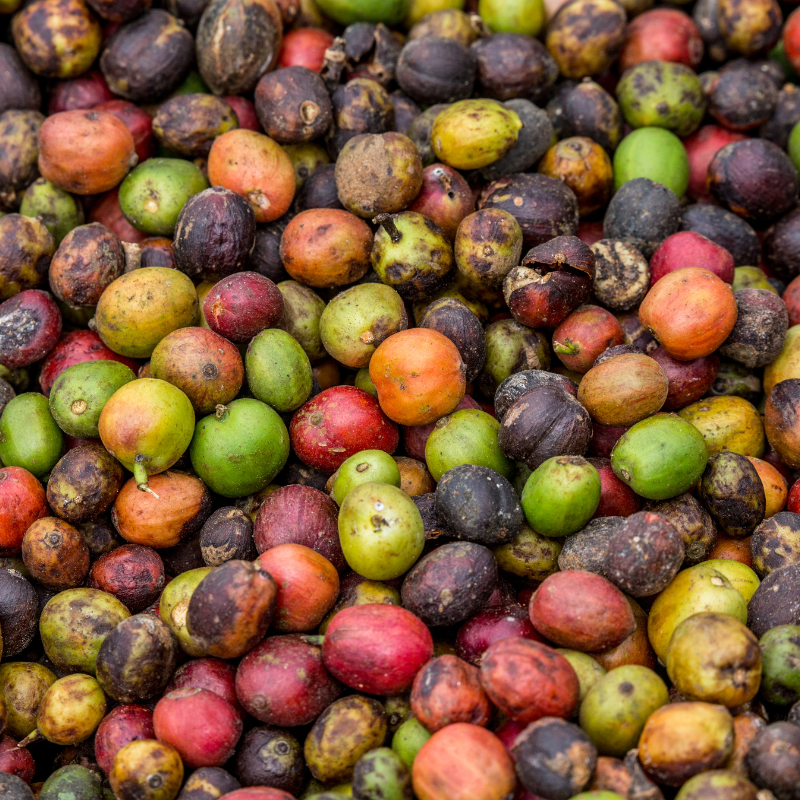
6. Rwandan Coffee
Country: Rwanda
Growing Altitude: 1,600-2,000m/5,250-6,562ft
Growing regions: Gissenyi
Coffee varieties: 95**%** Arabica and 5% Robusta
Profile: Silky and creamy orange blossom, caramel, and lemon
Processing: Natural
Average production: 33 million pounds (0.2% of the total global coffee production)
Harvest season: March – July
Overall global rank: 28th
Coffee has grown in Rwanda since the early 1900s and has become one of the country’s largest cash crops. While the country grows both arabica and robusta, arabica accounts for 95% of the coffee harvested.
The bourbon varietal is the most common arabica type, and in Rwanda, it usually develops a silk and creamy body with caramel, orange blossom, and lemon flavor notes. The country even has a pretty organized tour of small growers and processing stations, explaining the coffee growing process all year round – it’s certainly worth the visit when you are in the country!
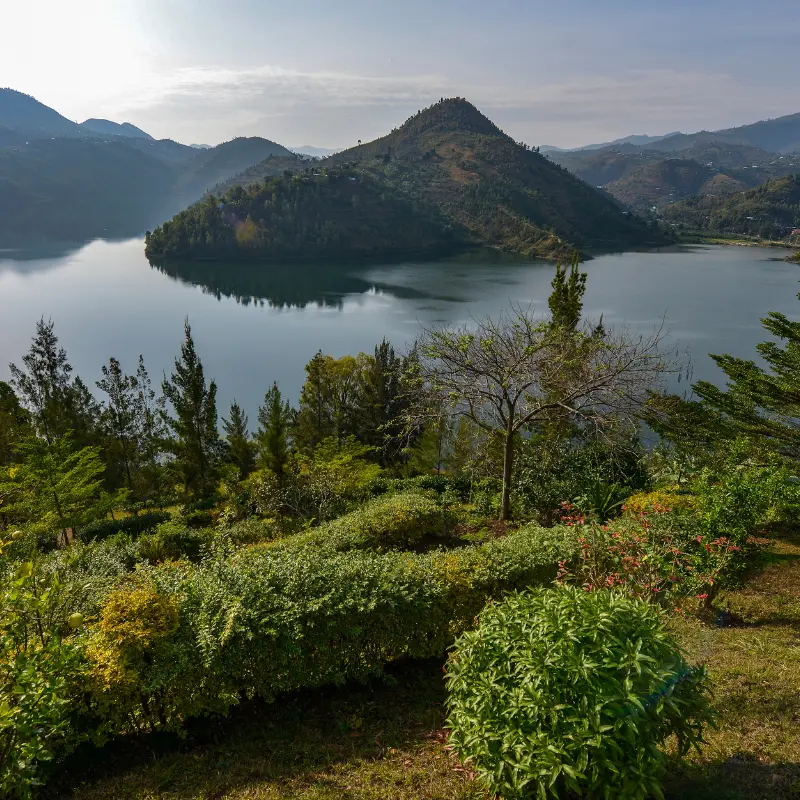
7. Burundian Coffee
Country: Burundi
Growing regions: Kayanza
Growing Altitude: 1,900-2,100m/6,234-6,890ft
Coffee varieties: 100**%** Arabica
Profile: Sweet berry flavors and floral aroma
Processing: Washed (wet)
Average production: 26 million pounds (0.2% of the total global coffee production)
Harvest season: June-July
Overall global rank: 29thh
Like its neighbor Rwanda, Burundi primarily grows arabica coffee, particularly the bourbon varietal. But, coffee in Burundi began to be cultivated almost 3 decades after its neighbor, Rwanda. Today, most coffee farmers in Burundi are small-scale, although the industry has struggled for years due to conflict and political instability.
Nonetheless, the country has begun to see the fruits of its labor as the industry is slowly stabilizing and exports are increasing. Coffee from this country offers a clean and bright delicate profile with a rich body and wine-like acidity, sweet berry tastes, and pleasant floral aromas. Coffee in Burundi is grown in the northern Kayanza region near the border with Rwanda.
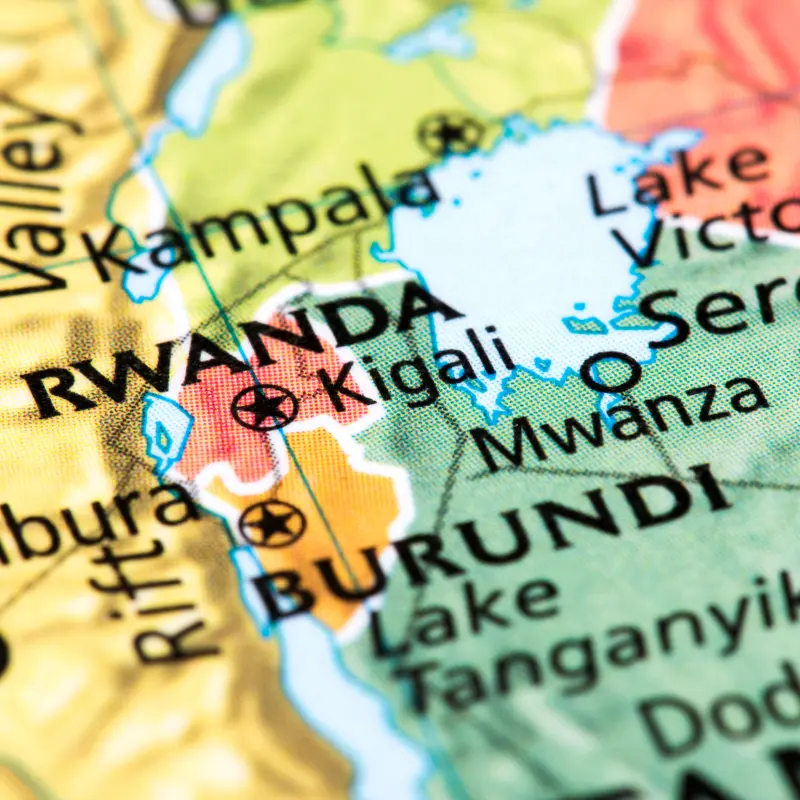
Conclusion: The Future of East African Coffee
Coffee is a big part of the crop export revenue for most East African countries. Moreover, there’s no doubt that East African coffee has left a mark on the global market thanks to its exceptional quality. African coffee is attractive to many consumers because of its meager prices compared to other coffee-growing regions.
Unfortunately, East African coffee hasn’t reached its full potential regarding production and earnings. East African coffee pulls in big bucks for exporters and international buyers, yet, the essential coffee producers don’t get to enjoy the lucrative piece of the pie.
Moreover, a long list of political, security, infrastructural, or bureaucratic hurdles continue to stunt East Africa’s production and export capabilities. With such impressive coffee quality and flavor, East African coffee shouldn’t account for less than 15% of the global coffee market.
However, with growing knowledge and interest in the crop among the younger generation, there’s hope. Nonetheless, more effort from the public and governments is needed to help the East African coffee industry reach its full potential.
